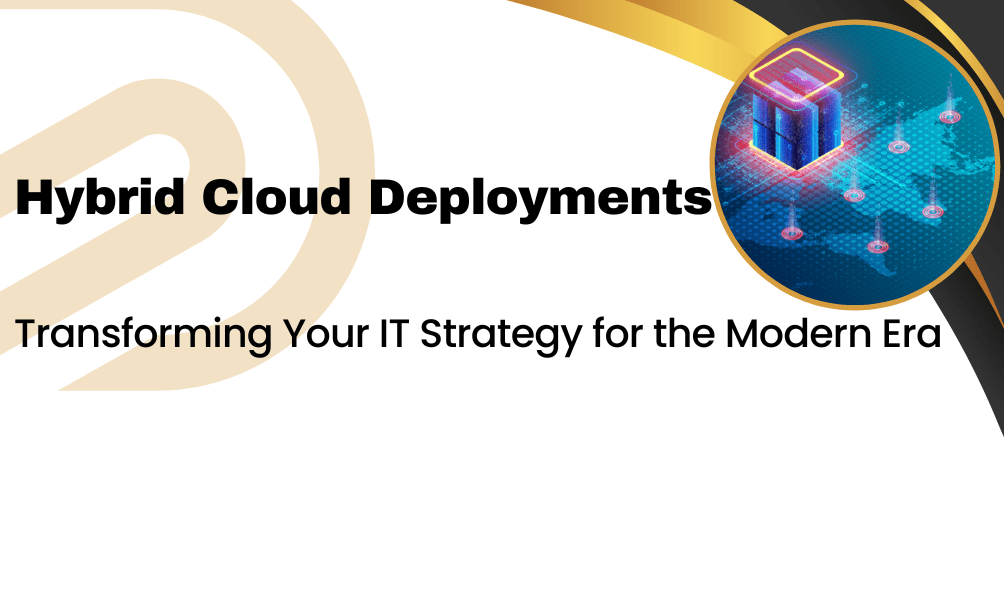While organizations are always migrating to the cloud technology for their IT infrastructure, the modern business environment is changing at very fast pace. The public and private clouds do present distinct advantages, but hybrid clouds are gaining ground now as a flexible and scalable solution. This paper looks into what hybrid cloud management is; how hybrid clouds work; their architectural components; and in what way businesses can obtain these benefits to achieve better data management with enhanced security compliance and cost efficiency.
Table of Contents
What is Hybrid Cloud?
A hybrid cloud is that computing environment that merges public cloud services with private cloud or on-premise infrastructure. It will allow data and applications to move between the different environments easily. Therefore, this type of infrastructure looks forward to setting up and maintaining a single hybrid computing environment that flexes and scales with regard to advantages from both public and private clouds. Its prime advantage is that it allows businesses to optimize their performance by effectively making better use of their workloads in order to cut costs through the optimal application of the best features of each cloud model.
For example, whereas a company might use a private cloud to store sensitive data relating to its customers for regulatory compliance purposes, it can still use a public cloud for scalable purposes to handle spiky workloads.
How Do Hybrid Clouds Work?
Hybrid clouds work because they enable organizations to run applications and also store their data across a number of environments: those both on-premises and cloud-based, while integrating these environments so they work together seamlessly. Traditionally, a hybrid cloud operates based on a centralized management platform that orchestrates the distribution of workload, resource optimization, and data integration across these environments.
This hybrid model uses a combination of
- Public Cloud: Third-party providers, such as Amazon Web Services (AWS), Microsoft Azure, or Google Cloud, make scalable and cost-effective resources available.
- Private Cloud: On premises-An organization may establish its private cloud inside its own facilities or that of a third-party partner. This is referred to as a cloud. It may be termed as Dedicated and Deployed in a third-party provider’s data center. Private clouds provide better levels of control and security for critical or sensitive workloads.
- On premises Data Centers: Are usually used for legacy systems or those workloads that require rigid security controls.
Hybrid cloud infrastructures allow companies to be more flexible in the use of IT resources as they can move workload between public and private clouds seamlessly.
What are the Types of Environments Found in Hybrid Clouds?

The hybrid cloud will typically incorporate one or more of the following types of environments.
- On-premises Infrastructure: Computers, physical or virtual, located in the company’s internal data center. The majority of these applications typically carry a high sensitivity or legacy applications requiring strong control.
- Private Cloud: This can either be on premises or a third-party hosted environment exclusive only to the organization. This environment provides more security, customization, and greater control compared to public clouds.
- Public cloud: Third-party cloud service providers, like AWS and Azure or Google Cloud, provide scalable and cost-effective options to compute and storage. The application can work pretty well with applications having fluctuating workloads.
The hybrid architecture bridges the two environments, enabling the workloads to be easily transferred between them as business demands change.
What are the Advantages of Using a Hybrid Cloud Architecture?
Hybrid cloud architecture provides numerous advantages for organizations, including:
- Flexibility and Scalability: Businesses can scale up or down computing resources according to their needs. An upsurge in demand can tap into the massive amount of resources a public cloud has without having to overprovision their private infrastructure.
- Economical Cost: It is cost-effective for organizations to use a mixture of private and public clouds for balancing workload. The mission-critical applications that have high control are performed on private clouds, and less sensitive and resource-intensive workloads are done on public clouds.
- Data Localization and Compliance: Sensitive data may be kept on-premises or in private clouds, meeting the regulations while taking advantage of public clouds for less sensitive data, with flexibility.
- Improved Security: The security controls can be more stringent in the case of private clouds, where sensitive data can be stored while non-sensitive data scalable workloads are outsourced to the public clouds.
- Disaster Recovery and Business Continuity: in Hybrid Cloud Organizations would have the ability to replicate and store critical data across multiple environments, thus ensuring business continuity in case of system failures or disasters.
What is the Difference Between Hybrid Cloud and Multi-Cloud?
The two terms are often used as if they are interchangeable, but on the face of it there are very crucial differences in hybrid cloud and multi-cloud architectures.
- Hybrid Cloud: This incorporates public and private clouds-and sometimes on-premises infrastructure-so data and applications can move between them. The environment is effectively homogenized into a unified and interlinked environment which is, in terms of flexibility, highly flexible.
- Multi-Cloud: In a multi-cloud environment, an organization makes use of services from different cloud providers but does not interleave the use. According to the requirement of business, different workloads may run on different cloud platforms, but such clouds usually work independently of each other.
To sum up, hybrid clouds focus primarily on the integration of diverse environments, while multi-cloud architectures try to highlight the use of multiple cloud platforms without close integration.
Hybrid Cloud Architecture

A hybrid cloud architecture is a strategic approach that unifies the multiple environments of public, private, and on-premises by combining the best of infrastructure and management tools as well as migration techniques. Here is how this works:
- Unified Management Platform: A centralized management system supervises the interactions between both public and private clouds, allowing businesses to manage their hybrid cloud resources on one dashboard.
- Data Integration and Migration: Hybrid cloud architecture includes migration and data synchronization tools that are easily undertaken across environments. These tools ensure the steady flow of data from private to public clouds.
- The security layers: The enforcement of policies and governance structures must be present everywhere in order to protect sensitive information, which is irrespective of location.
How Do the Different Environments Communicate in a Hybrid Cloud?
In hybrid cloud, communication in different environments can be done through:
- API Gateways: They are basically a bridge between public and private clouds and can thus communicate and transfer data encryptedly. API gateways tend to facilitate data-flow management between environments while enforcing security policies.
- VPNs: VPN creates a secure bridge between on-premises infrastructure and public clouds, thus transferring sensitive data between the environments.
- Inter-cloud Connectivity Services: Cloud providers provide connectivity services, such as Azure ExpressRoute or AWS Direct Connect for provisioning secure, high-performing connections between on-premises infrastructure and public clouds.
- Middleware Platforms: Middleware, such as Red Hat OpenShift or Kubernetes, enables organizations to manage and orchestrate workloads across multiple environments as part of their hybrid cloud deployment.
Modern Hybrid Cloud Architecture
With business scales and adopting cloud-native technologies, modern hybrid architectures are ever increasingly built on containerization and orchestration tools such as Kubernetes and Docker. They enable the building of consistent applications that can run on any cloud environment.
In this architecture:
- Containers hold applications with their dependencies together in the application, making it easy to move to any other private or public cloud if desired.
- The orchestrator Kubernetes will manage all those containers in order to automate the deployments, scaling, and management of it in various environments for smooth workload distribution.
Implementation of DevOps practices in managing a hybrid cloud not only means that teams could develop, test, and deploy applications across multiple environments while maintaining uniformity in processes but also enables faster development cycles.
Data Privacy and Security Compliance in Hybrid Clouds
Data privacy and security compliance has become a prime headache for organizations that use hybrid clouds. Hybrid cloud architectures would let companies, therefore, comply with rigid regulatory requirements: it would be possible to keep sensitive data in a private cloud while making public cloud resources available for non-sensitive operations.
- Data Residency: Hybrid Cloud Management Through this model of management, organizations will be able to ensure that some sensitive data resides within specific geographic regions for the compliance of regulatory requirements, such as GDPR or HIPAA. With this, they will get sensitive data to reside in the private clouds of regulated regions while leveraging the scalability of public clouds.
- Encryption: All data exchanged between the various environments must be encrypted in transit and rest in order to avoid exposing sensitive information even when stored in the least controlled public clouds.
Identity and Access Management: IAM tools ensure that only the allowed users and systems have access to the cloud resources, regardless of their location. Tools, such as Azure Active Directory or AWS IAM, help businesses maintain strict authentication policies within all hybrid cloud environments.
Hybrid Cloud Management
Managing the hybrid cloud environment will be more complex in terms of coordinating the different environments. Proactive management of the hybrid cloud ensures optimization of resource use and ensures security compliance with minimal disruptions to the seamless integration between public and private cloud environments.
- Centralized Management Tools: Leverage the management of public and private clouds by using a single unified control panel through Microsoft Azure Arc or Google Anthos. This allows the customers to track their workloads, implement security policies, and also obtain control over costs across environments.
- Automation and Orchestration: Hybrid cloud management demands automation of workloads including scaling, patching, and backup. Orchestration tools such as Kubernetes and Terraform facilitate simple application lifecycle management between environments by automatically provisioning infrastructure.
- Cost Management: Though hybrid cloud architectures offer cost flexibility, runaway costs can be part of this package if not properly managed. Cloud management platforms allow a company to track its usage across environments and optimize costs by running non-critical workloads in public clouds during peak hours and using the private cloud for steady-state operations.
- Monitoring and Performance Management: PERFORMANCE METRICS can be monitored with the help of tools like Datadog, New Relic, or Prometheus. This alerts the teams of potential issues. These tools enable better monitoring of workloads and infrastructure performance across both public and private environments and hence assure optimizing performance.
- Security Compliance: Hybrid cloud management tools should contain in-built controls that provide complete protection for all data across the three environments. This should include continuous vulnerability scanning, intrusion detection, and key management of the encryption keys to ensure that proper standards are met across the public and private cloud infrastructure.
Conclusion
As the most desirable choice of business, hybrid clouds are emerging as the optimum choice for organizations seeking flexibility and scalability with control at the organizational level. Hybrid clouds can leverage both public and private environments to adapt infrastructure according to specific business needs-from data compliance to performance scalability.
This requires a unified approach towards the orchestration of workloads, the security of data, and expenditure optimization across different environments. By using such tools and techniques as Kubernetes, API gateways, and centralized management platforms, companies can completely unlock hybrid cloud architecture and drive business innovation while being in a posture of security and compliance.
The hybrid cloud model would be the one guiding and shaping the future of IT infrastructure, along with the evolution of cloud technologies, offering that magic mix of agility, security, and cost efficiency that modern enterprises aspire to achieve.
You can also read Complete Guide to Deploying Your .NET Core Application on the Cloud

